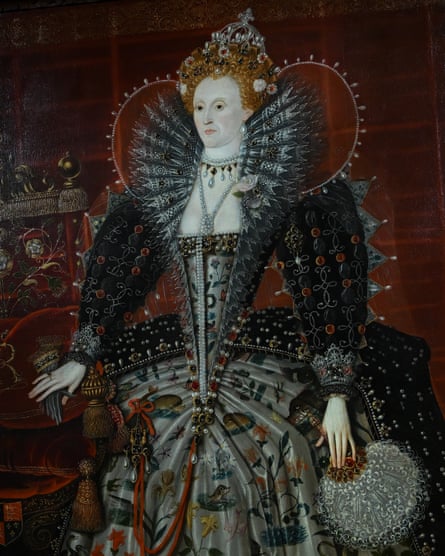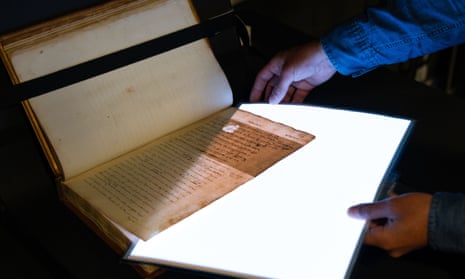It was the first official account of Elizabeth I’s reign, one of the most valuable sources on early modern Britain, commissioned by her successor, King James I. But, for 400 years, no one has been able to read passages on hundreds of pages of this manuscript because they had been so heavily revised and self-censored by their 17th-century author, apparently to avoid punishment for offending his patron.
Now state-of-the-art imaging technology has enabled the British Library to read hidden pages of William Camden’s Annals for the first time, “a significant finding in early modern historical scholarship”.
Those pages had been either over-written or concealed beneath pieces of paper stuck down so tightly that attempting to lift them would have ripped the pages and destroyed evidence.
Enhanced imaging technology, involving transmitted light, has revealed those texts, offering new insights into the queen and the political machinations of her court, to the excitement of scholars.

It casts new light on significant historical episodes such as Elizabeth’s excommunication by Pope Pius V and her nomination of James as her successor.
Julian Harrison, the British Library’s lead curator of medieval historical and literary manuscripts, told the Guardian that seeing unknown passages emerge for the first time was “heart-stopping”. He said: “It’s really one of those moments where ‘now you can’t see anything, now you can’, the absolute reversal of ‘now you see it, now you don’t’. The imaging is revolutionary. We’ve never done anything quite like this before. It’s just incredible.”
Written in Latin, the Annals were based on first-hand evidence such as witness reports and official parliamentary records, collected by Camden, who died in 1623.
Harrison said: “We have 10 volumes of the handwritten manuscripts … [of which] literally several hundred pages … [have] passages which had been covered up.”
He added: “Modern historians have commonly relied on Camden’s Annals as an impartial and supposedly accurate record. This new research reveals that key sections were revised … It implies that Camden’s Annals were deliberately rewritten to present a version of Elizabeth’s reign that was more favourable to her successor.”
He noted, for example, its claim that Elizabeth I had named James VI of Scotland as her successor on her deathbed: “Elizabeth never married and she died childless in 1603, to be succeeded on the English throne by Mary’s son, James VI of Scotland. Analysis of the manuscript drafts shows that the deathbed scene was a fabricated addition that Camden did not intend originally to put into his history.
“He presumably included it to appease James, so that his succession looked more predetermined than it had actually been. Elizabeth was too ill to speak in her final hours and no other historical evidence points to this deathbed scene being true.”
In 1570, Pope Pius V excommunicated Elizabeth. Harrison said Camden originally said the pope was motivated to do so by “spiritual warfare”, only to replace it in the published version with the statement that Pius was creating “secret plots” against Elizabeth: “By removing the previously inflammatory wording, Camden made the official record more neutral in tone.”
Historians will now want to pore over this material. “There’s still more to be discovered,” Harrison said. “What’s going to be interesting is how modern interpretations of Elizabeth I, such an important historical figure, are potentially going to be changed.”
The researcher Helena Rutkowska has been working on the Annals as part of a collaborative doctoral award in a partnership between the University of Oxford, where she is a DPhil student, the British Library and the Open University.
She spoke of the excitement of seeing original texts for the first time: “It was incredible … We’ve been able to clearly see new information that no one has seen for 400 years.”










